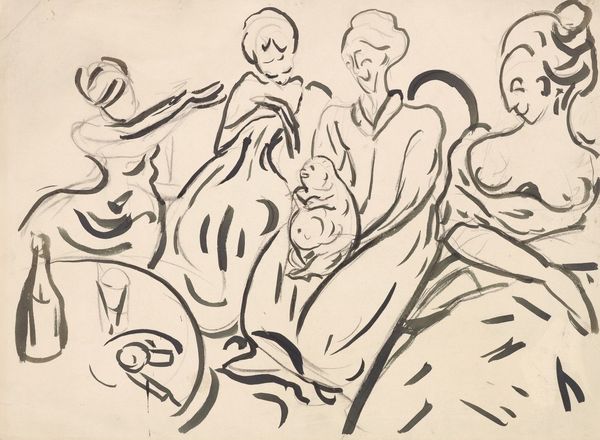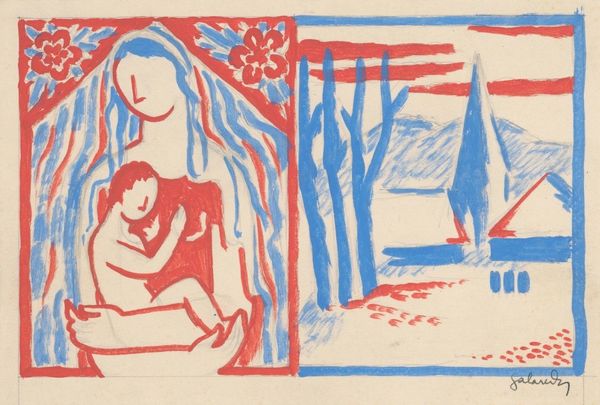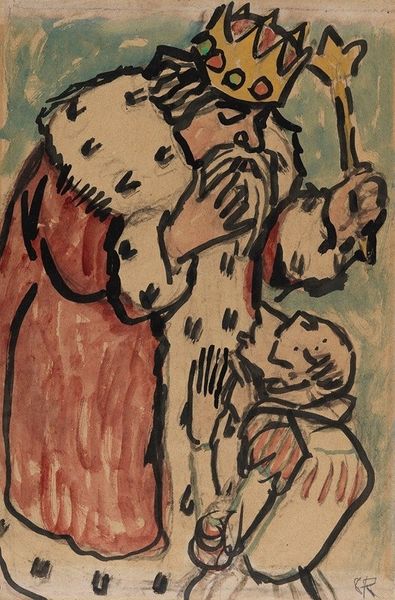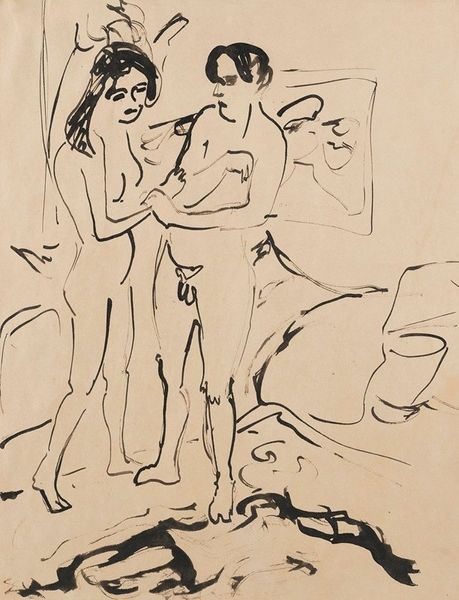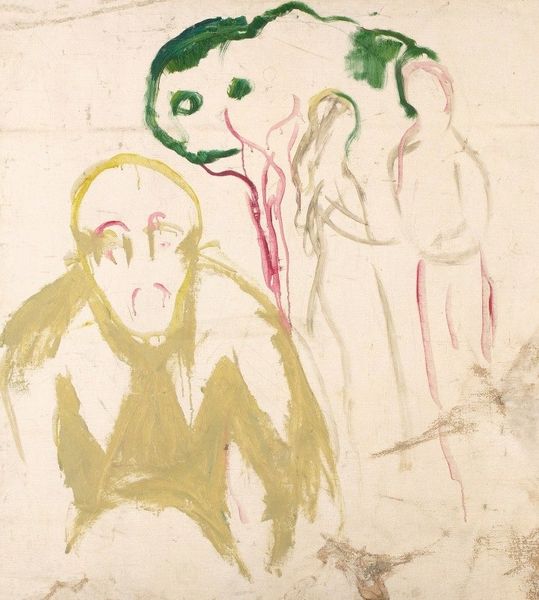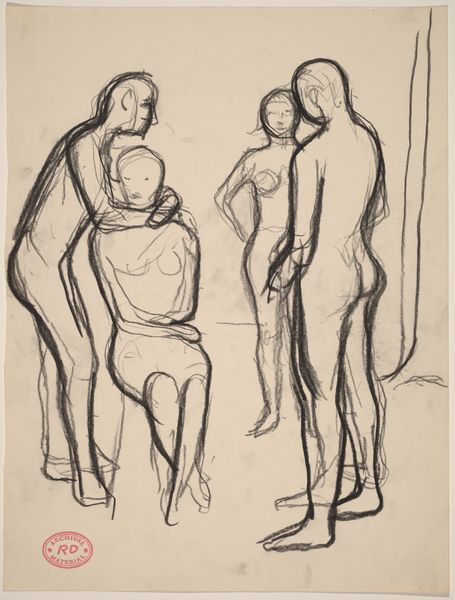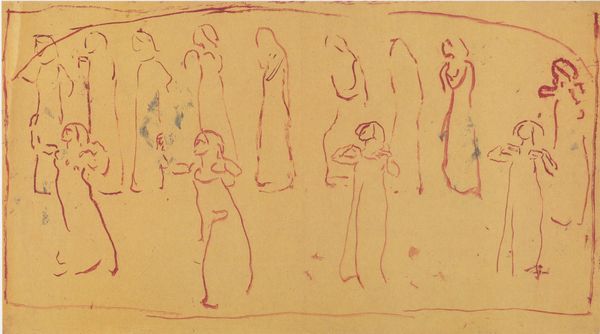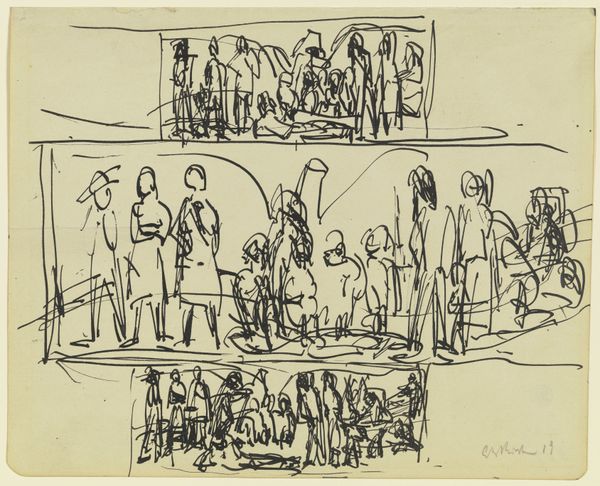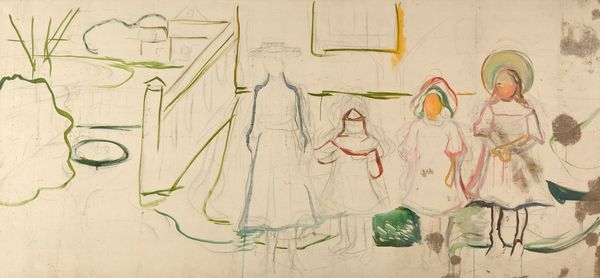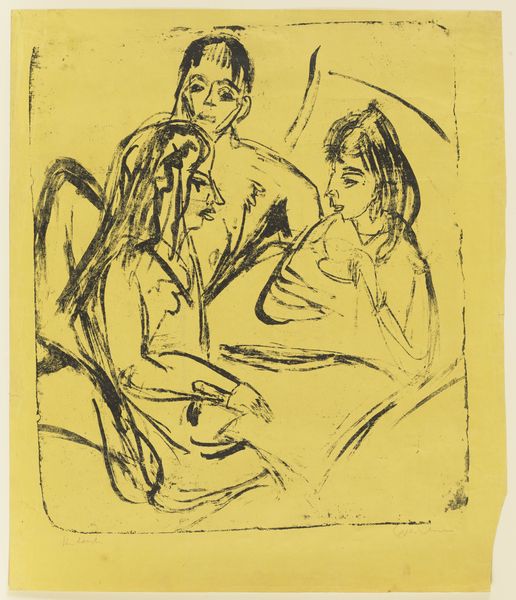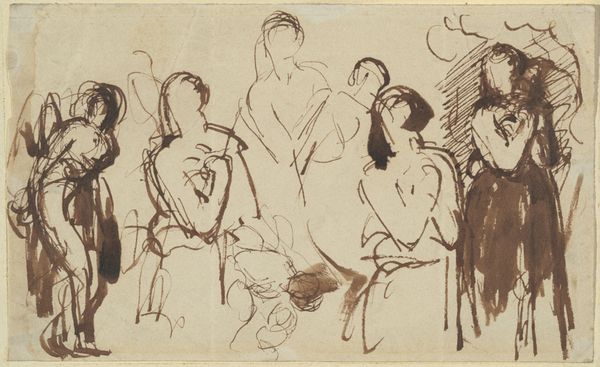
drawing, pencil
#
portrait
#
drawing
#
figuration
#
pencil
#
expressionism
Copyright: Public Domain: Artvee
Editor: This is "Untitled 23," a pencil drawing by Edvard Munch. It shows a gathering of figures rendered in red and green lines; some stand around a figure lying on the ground. It's eerie, almost like a raw, exposed nerve. What can you tell us about it? Curator: The rawness you observe isn't merely aesthetic. Consider the very *material* here: pencil on paper, humble tools, readily available. Munch wasn't employing costly oils or marble. This deliberate choice collapses the distance between "high art" and the accessible realm of drawing. It democratizes the image. Editor: Democratizes? Curator: Yes! Think about it: mass-produced pencils allowed widespread visual expression and note-taking. By employing these means, he aligns the emotional content with common materials, implicating everyone in this display of grief or observance. How does this shift our understanding of Expressionism? Is it about *expressing* something through common tools, and not just representing high feelings? Editor: That's fascinating. So the medium is part of the message? It isn't just *what* is shown but *how* it is produced and spread. It makes the piece much more personal and vulnerable, I think. Curator: Precisely. It makes us ask: Who gets to feel? And through what channels? Editor: I guess I usually think of the art as reflecting what someone wanted to express. But you’re showing me the *materials* carry a lot of the meaning as well. That they become what is trying to be expressed. It gives a whole new level of importance to the artmaking process! Curator: Indeed. Recognizing this reveals that Munch isn’t just capturing a moment, but implicating us in a social and material reality.
Comments
No comments
Be the first to comment and join the conversation on the ultimate creative platform.

